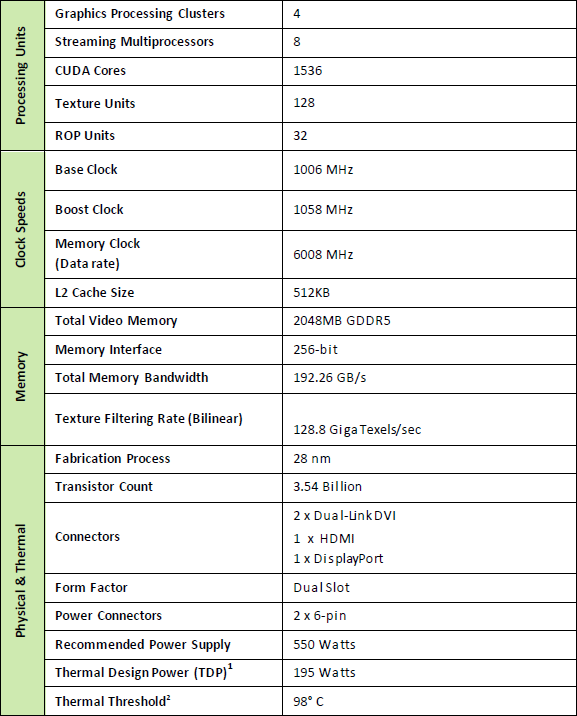NVIDIA GeForce GTX 680 Review: Kepler Debuts
The rumor mill kicked into high gear over the last few months, and has been consistently churning out more and more Kepler scuttlebutt (whether true or false) coincident with Radeon HD 7000 series launches. Today though, we can put the rumors to rest. We’ve had a new Kepler-based GeForce GTX 680 in hand for a couple of weeks now and can finally reveal all of the juicy details.
First up, we have some specifications and a little back story. And on the pages ahead, we’ll dive a little deeper and give you all the full scoop on Kepler, its new features and capabilities, and of course the GeForce GTX 680’s features and performance.
The NVIDIA GeForce GTX 680, GK104 "Kepler" Based Graphics Card
|

The GeForce GTX 680’s main features and specifications are listed in the table above. Before we get into the specifics of the card and it’s GPU, however, we want to direct your attention to a few past HotHardware articles that lay the foundation for what we’ll be showing you here.
Although the GeForce GTX 680 is built around a new GPU that is based on a new architecture, the Kepler-based GK104 at the heart of the card leverages technologies first introduced on previous-generation NVIDIA products. As such, we’d recommend checking out these articles for more detailed coverage of many of NVIDIA’s existing technologies that carry over to the new GeForce GTX 680:
- GPU Tech: NVIDIA Talks Fermi, Unveils Nexus
- NVIDIA GF100 Architecture and Feature Preview
- NVIDIA GeForce GTX 480: GF100 Has Landed
- NVIDIA 3D Vision Surround is Here
- NVIDIA GeForce GTX 580: A New Flagship Emerges
- NVIDIA 3D Vision 2 and The Asus VG278H LCD Review
In our Fermi and GF100 architecture previews we discuss Fermi’s architecture and detail Fermi’s CUDA cores and Polymorph and Raster engines, among other features. In our GeForce GTX 480 coverage, we dig a little deeper into Fermi, and discuss the first graphics card based on the technology. Our GeForce GTX 580 coverage details the GF110, the more-refined re-spin of the GF100 GPU. And in our 3D Vision Surround and 3D Vision 2 articles, we cover NVIDIA’s multi-monitor and stereoscopic 3D technologies, which are both very much a part of the GeForce GTX 680.








